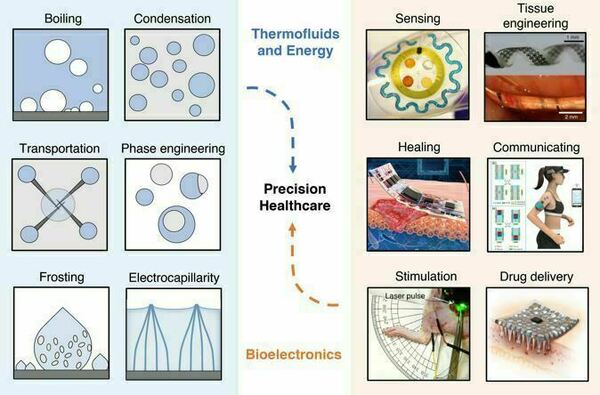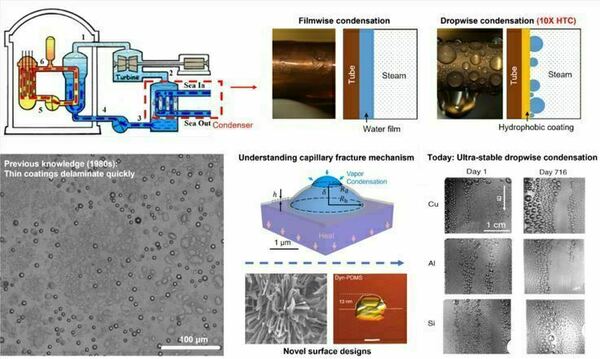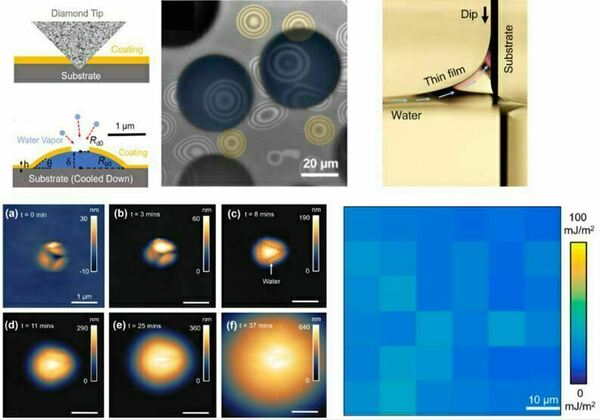Research
Overview
We use experimental surface science to manage complex fluid behaviors, such as wetting, adhesion, elasto-capillarity, water-repellency, liquid-liquid phase separation, solid-liquid-gas phase transition, separation techniques, and electrolytes dynamics in bioelectronic devices. Our goal is to utilize the capability of such liquid control to enhance overall device performance in many domains, including healthcare, environment, and energy. Our current research focuses on: 1) Thermofluidic designs for precision healthcare devices, 2) Nanoengineered surfaces for energy and biomedicine applications, and 3) Elasto-capillary-based surface measurements.
Thermofluidic designs for precision healthcare devices

Selected publications:
- J. Ma, et al. Airborne Biomarker Localization Engine (ABLE) for open air point-of-care detection. Under revision.
- J. Ma, et al. Bridging the gap - Thermofluidic designs for precision bioelectronics. Advanced Healthcare Materials (2023).
- J. Shi, et al. Monolithic-to-focal evolving biointerfaces in tissue regeneration and bioelectronics. Nature Chemical Engineering (2024).
- C. Yang, et al. Permeable junction-enhanced sustainable microfabrication for value-added device applications. Nature Sustainability (in press).
Functional Nanoengineered Surfaces

Selected publications:
- J. Ma*, L. E. Porath*, et al. Ultra-thin self-healing vitrimer coatings for durable hydrophobicity. Nature Communications (2021).
- M. J. Hoque*, L. Li*, J. Ma*, et al. Ultra-resilient multi-layer fluorinated diamond like carbon hydrophobic surfaces. Nature Communications (2023).
- J. Ma*, Z. Zheng*, et al. Condensation induced delamination of nanoscale hydrophobic films. ACS Nano (2022).
- J. Ma, et al. Condensation-induced delamination of nanoscale hydrophobic films. Adv. Funct. Materials (2019).
Elasto-capillary-based surface measurements

Selected Publications:
- J. Ma*, I. Zarin*, et al. Direct measurement of solid-liquid interfacial energy using a meniscus. Physical Review Letters (2022).
- J. Ma, et al. Role of thin film adhesion on capillary peeling. Nano Letters (2021).
- J. Ma, et al. Condensation induced blistering as a measurement technique for the adhesion energy of nanoscale polymer films. Nano Letters (2020).
- H. Cha, J. Ma, et al,. In situ droplet microgoniometry using optical microscopy. ACS Nano (2018).